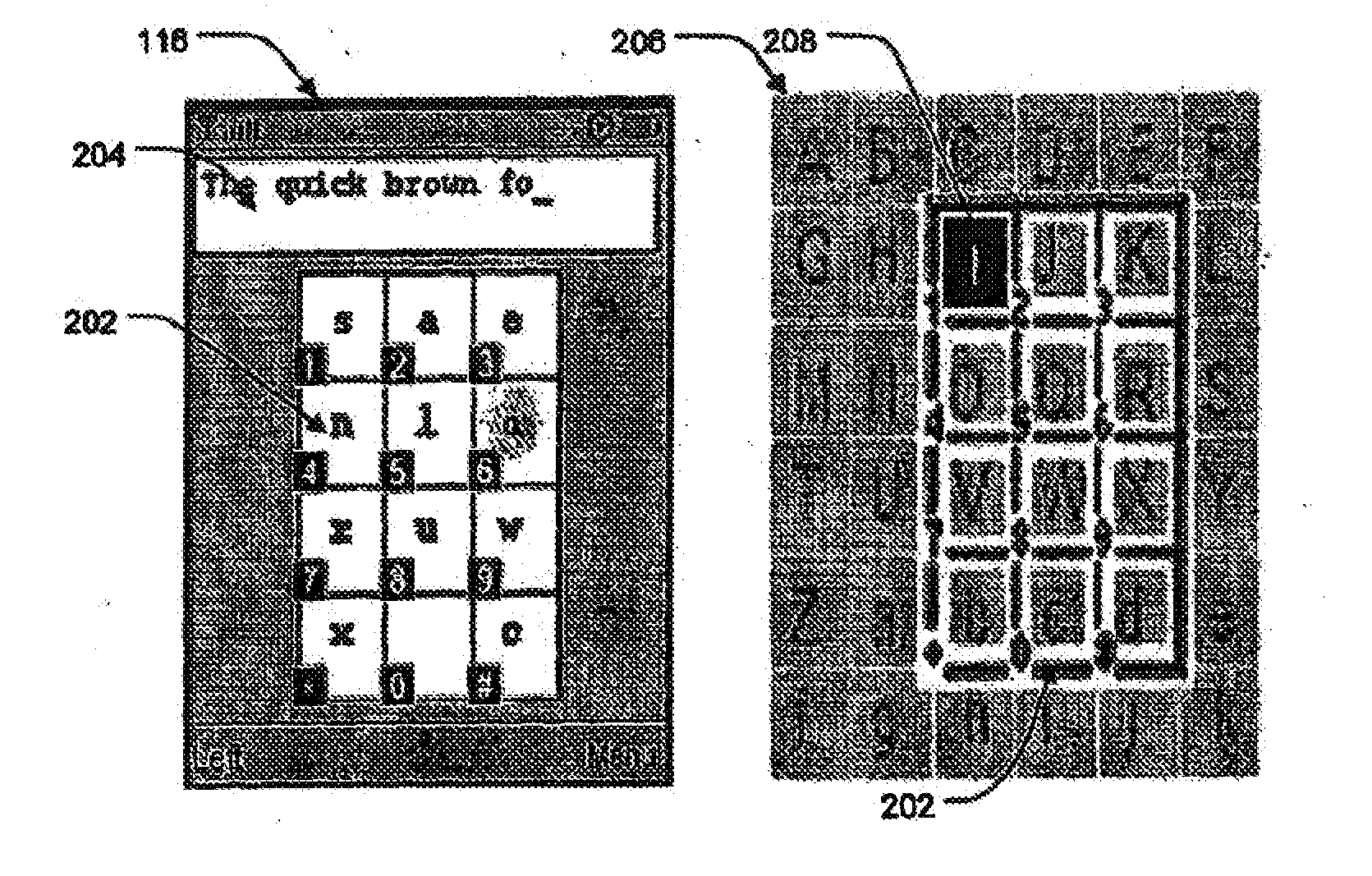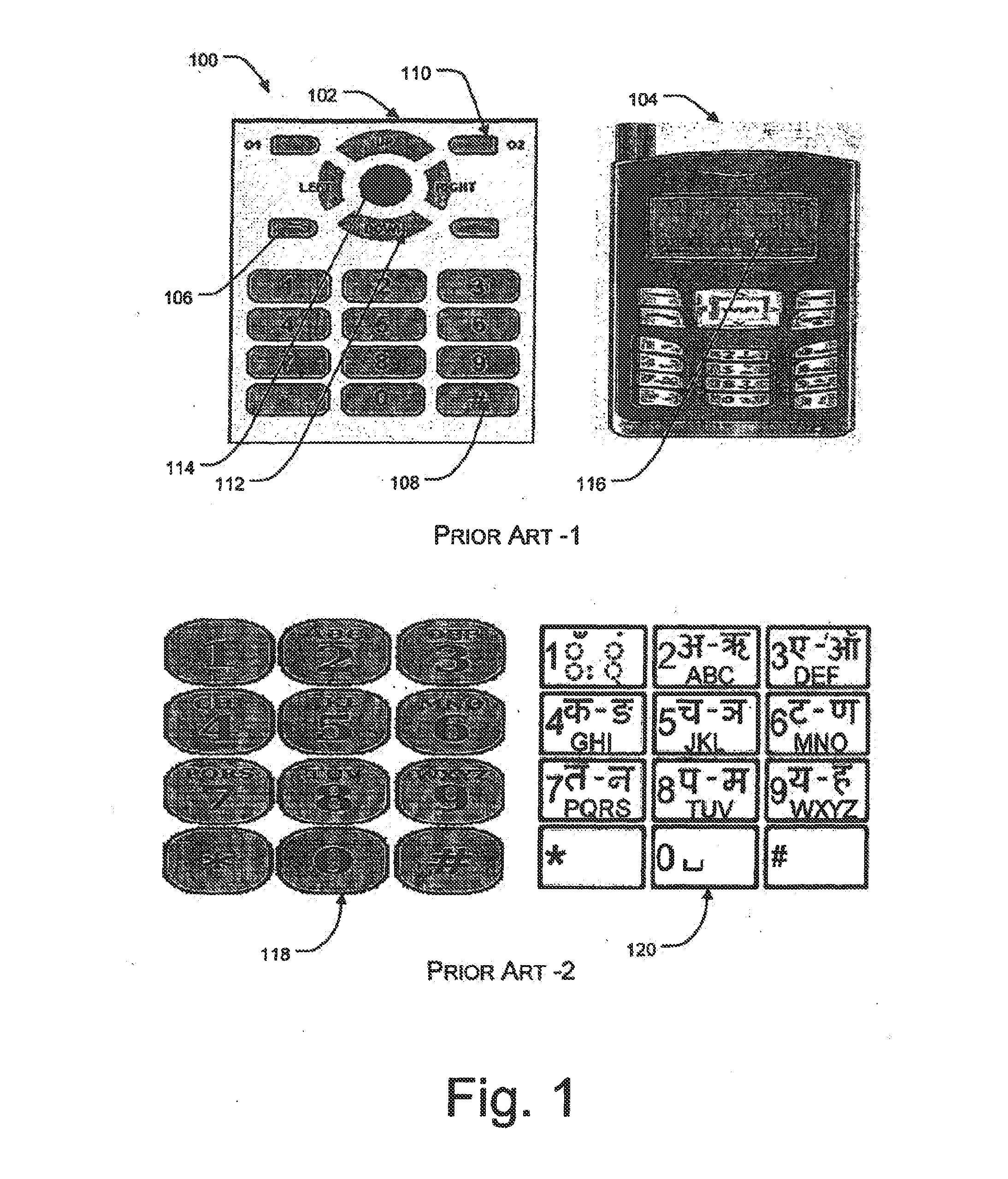Systems and methods for text input for touch-typable devices
a touch-typable device and text input technology, applied in the field of systems and methods for text input for touch-typable devices, can solve the problems of not being very usable for the old or the sick, cumbersome, slow, error-prone process, etc., and achieve the effect of a seamless typing experience and a smoke-free environmen
- Summary
- Abstract
- Description
- Claims
- Application Information
AI Technical Summary
Benefits of technology
Problems solved by technology
Method used
Image
Examples
Embodiment Construction
Exemplary Environment
[0045]FIG. 1 illustrates a typical touch-typable device such as a mobile phone and a general ambiguous keypad layout structure of a touch-typable device for entering textual input to the device. FIG. 1 includes Prior Art-1 showing a typical touch-typable device such as a mobile phone and Prior Art-2 showing a general ambiguous keypad layout structure supporting one or more languages.
[0046]Prior Art-1 shows the structural layout of a typical touch-typable device 102 and a mobile phone 104. The touch-typable device 102 includes communication keys (green and red) 106, an ambiguous text input keypad 108, option keys 110, navigation keys 112, and a select key 114. The mobile phone 104 shows an exemplary layout of the keypad 102 and a display medium 116.
[0047]In an embodiment, a user inputs text using the ambiguous text input keypad 108 by pressing a combination of keys on the keypad 108 and the entered text is displayed on the display medium 116. The keypad 108 is al...
PUM
 Login to View More
Login to View More Abstract
Description
Claims
Application Information
 Login to View More
Login to View More - R&D
- Intellectual Property
- Life Sciences
- Materials
- Tech Scout
- Unparalleled Data Quality
- Higher Quality Content
- 60% Fewer Hallucinations
Browse by: Latest US Patents, China's latest patents, Technical Efficacy Thesaurus, Application Domain, Technology Topic, Popular Technical Reports.
© 2025 PatSnap. All rights reserved.Legal|Privacy policy|Modern Slavery Act Transparency Statement|Sitemap|About US| Contact US: help@patsnap.com



